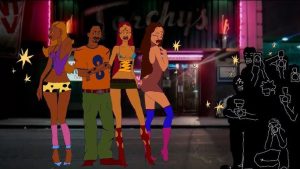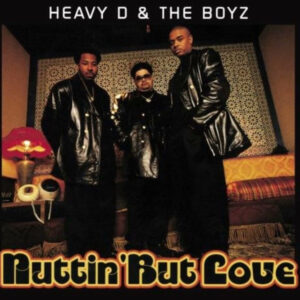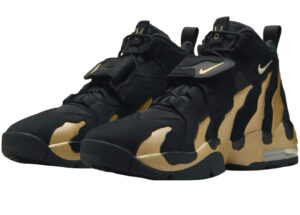Rucker Park, located in the heart of Harlem, New York, stands as one of the most iconic basketball courts in the world. With a rich history that spans over seven decades, this legendary park has served as a crucible for basketball legends and an enduring cultural touchstone. What began as a modest summer tournament in 1946 has evolved into a mecca for street basketball, drawing top players, celebrities, and fans from around the globe. Today, Rucker Park continues to be a place where the spirit of competition thrives, streetball reigns supreme, and a sense of community is fostered.
The Early Days: Holcombe Rucker’s Vision
Rucker Park owes its origin to Holcombe Rucker, a New York City playground director who sought to use basketball as a tool to help young people in his Harlem neighborhood. In 1946, Rucker organized a summer basketball tournament with a simple mission: to engage Harlem’s youth in a positive activity that could keep them off the streets while promoting education. Rucker, a former teacher, emphasized the importance of using basketball as a way to open doors for young people, not only on the court but also in life.
Rucker’s tournament quickly gained popularity as it attracted talented players from across the city. The competition was fierce, and the tournament became a platform for local players to showcase their skills. Rucker made sure that education remained a priority, requiring players to either attend college or work toward getting a scholarship. His passion for uplifting Harlem’s youth through basketball and education left an indelible mark on the community, and even after his untimely death in 1965, his legacy lived on through the park and tournament that bear his name.
The Evolution of the Tournament
After Holcombe Rucker’s death, the summer tournament continued to grow, eventually becoming the famed Entertainers Basketball Classic (EBC). What began as a local competition evolved into an internationally recognized event, drawing not only New York City’s best streetball players but also some of the top names in professional basketball. The EBC took on a life of its own in the 1980s and 1990s, transforming Rucker Park into a cultural hub where basketball, music, and entertainment collided.
What sets the Entertainers Basketball Classic apart from other basketball tournaments is the electric atmosphere it fosters. The crowd plays a critical role in the game’s energy—fans shout out names, give players nicknames, and offer real-time commentary. It’s a place where competition is as much about putting on a show as it is about winning. Streetball legends were born here, many of whom never played professionally, but their fame at Rucker Park rivals that of NBA stars.
Players like Earl “The Goat” Manigault, Joe “The Destroyer” Hammond, and Pee Wee Kirkland became local heroes for their exploits on the Rucker Park court. These legends, along with other streetball greats, would later influence NBA players like Allen Iverson, Kobe Bryant, and Kevin Durant, who themselves made appearances at the park in later years. Their presence elevated the status of Rucker Park as a place where streetball prowess could translate into mainstream basketball fame.
Rucker Park’s Influence on Professional Basketball
Rucker Park’s reputation as a proving ground for elite basketball talent has attracted numerous professional athletes over the years. NBA greats like Wilt Chamberlain, Kareem Abdul-Jabbar, Julius “Dr. J” Erving, and more recently, Kevin Durant and Kyrie Irving, have all graced the Rucker Park court at some point in their careers. For these players, stepping onto the asphalt court in Harlem was not just about playing a game of basketball—it was about earning respect in one of the toughest basketball environments in the world.
The park became a place where up-and-coming players could test their skills against seasoned pros in a unique setting. Unlike the polished hardwood floors of NBA arenas, Rucker Park’s outdoor asphalt court—with its raucous crowd and unpredictable elements—presents a different kind of challenge. It’s not uncommon for professional players to come to Rucker Park and struggle, as the rules of streetball and the intensity of the crowd can be overwhelming.
However, those who excel at Rucker Park earn a different kind of recognition. In a sense, dominating at Rucker means you’ve made it in the basketball world—not because of stats or contracts, but because you’ve earned the respect of one of the toughest crowds in basketball. This respect transcends the game, becoming part of a player’s legacy, whether they play in the NBA or remain a streetball legend.
The Entertainers Basketball Classic: Where Basketball and Celebrity Meet
In addition to its reputation as a breeding ground for basketball talent, Rucker Park has become a cultural hub that attracts celebrities, musicians, and entertainers from all walks of life. The Entertainers Basketball Classic (EBC) has, over the years, become as much about the show as it is about the competition. With hip-hop culture deeply intertwined with street basketball, Rucker Park became a gathering place for some of the biggest names in the entertainment industry.
During the 1990s and early 2000s, it wasn’t uncommon to see high-profile rappers and musicians like Jay-Z, Fat Joe, and Diddy on the sidelines, supporting teams or even sponsoring them. The EBC’s rise coincided with the golden era of hip-hop, and Rucker Park became a place where the worlds of basketball and hip-hop seamlessly converged. This period gave rise to the concept of “team ownership” by rap moguls, where hip-hop stars sponsored and put together teams to compete in the tournament. This fusion of basketball, music, and street culture created a unique atmosphere that elevated Rucker Park’s status even further.
In 2003, Jay-Z’s S. Carter team was set to play against Fat Joe’s Terror Squad in the championship game, but the event became so hyped that local authorities had to cancel it due to safety concerns over the massive crowd. This moment cemented Rucker Park’s place in popular culture as not just a basketball venue but a symbol of the power of street culture, basketball, and music.
The Basketball Tournament (TBT): Taking Rucker to New Heights
In recent years, Rucker Park has continued to evolve, remaining relevant in the ever-changing basketball landscape. One of the most significant developments in Rucker’s modern history was its selection as the first outdoor venue for “The Basketball Tournament” (TBT), an annual open-application basketball tournament known for its high level of competition and its $1 million prize. This marked a historic moment for Rucker Park, signaling its enduring legacy and continued influence in the basketball world.
The decision to host TBT at Rucker Park further underscored the court’s cultural significance. By bringing a professional-level tournament to the outdoor venue, TBT organizers recognized the unique atmosphere and history of the park as something that transcended the game itself. Rucker Park’s gritty environment, paired with the stakes of TBT’s high-level competition, brought a new kind of energy to the tournament and honored the park’s rich basketball tradition.
Rucker Park Today: A Place of Community and Legacy
While Rucker Park remains a symbol of street basketball’s past glories, it is also very much a vital part of Harlem’s present and future. For the local community, Rucker Park is not just a basketball court—it is a space where history, culture, and community converge. Over the decades, it has continued to foster a sense of belonging and pride for Harlem residents. The park represents opportunity for young players hoping to follow in the footsteps of those who came before them, offering a platform to showcase their skills and earn respect.
Rucker Park also remains a site of cultural pilgrimage for basketball enthusiasts worldwide. Fans of the game, regardless of whether they grew up in Harlem or halfway across the globe, recognize the court as hallowed ground. Tourists visit Rucker Park to see where legends played, to stand on the same court that hosted some of the greatest players and moments in basketball history. Whether you’re a die-hard basketball fan, a streetball enthusiast, or someone looking to experience a piece of Harlem’s vibrant history, Rucker Park is a must-visit destination.
The Future of Rucker Park
As basketball continues to evolve, Rucker Park’s place in the game remains secure. While it has adapted to new trends and cultural shifts, the park’s core identity as a place where basketball is more than just a game remains intact. Its role as a cultural touchstone for Harlem and a proving ground for basketball talent ensures that it will continue to be a place where legends are made.
Looking ahead, initiatives to preserve and enhance Rucker Park are already underway. The NBA, in partnership with various organizations, has invested in refurbishing the court to ensure that future generations can experience its magic. These efforts, coupled with the park’s continued hosting of high-profile events like the EBC and TBT, ensure that Rucker Park will remain a vital part of both basketball and Harlem culture for years to come.
Impression
Rucker Park’s history is one of perseverance, community, and legendary basketball moments. From Holcombe Rucker’s visionary tournament in the 1940s to the modern-day Entertainers Basketball Classic and “The Basketball Tournament”, Rucker Park has grown into a symbol of excellence, resilience, and cultural unity. The park’s impression on the game of basketball, both at the street level and in the professional arena, is undeniable.
Whether you’re drawn to the legends of the past, the competition of the present, or the promise of the future, Rucker Park continues to offer something for everyone. It’s more than just a basketball court—it’s a place where culture, history, and community come together, and where the spirit of Harlem lives on.
No comments yet.







